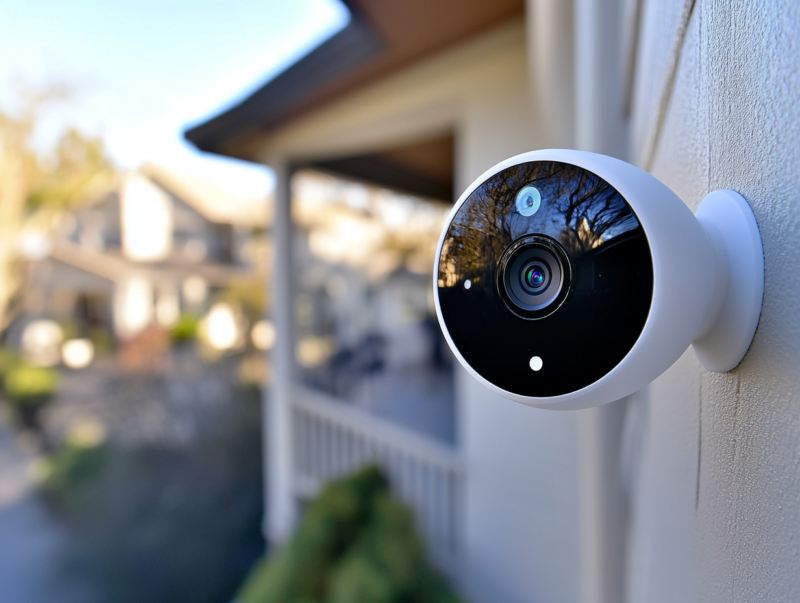Smart home security systems combine innovation and peace of mind, offering tools to safeguard your home like never before. From AI-powered motion detectors to advanced video doorbells, today’s smart security solutions allow you to monitor, protect, and control your space with ease. But as with any technology, they come with considerations to weigh before jumping in. Let’s explore these solutions, weaving in product recommendations, actionable lists, and practical insights for both detail-oriented readers and skimmers alike.
Smarter Surveillance for Modern Homes
Devices like the Ring Video Doorbell Pro 2 or the Arlo Ultra 2 Spotlight Camera redefine home monitoring. The Ring Pro 2 offers innovative features like 3D motion detection and a bird’s-eye view for wide-angle coverage of entry points. Meanwhile, the Arlo Ultra 2 boasts 4K video quality and color night vision, ensuring crystal-clear footage day or night.
Strategic placement of these devices is crucial. Install cameras to cover key entry points, such as doors, windows, and driveways. Avoid placing them too high or too low, as this may create blind spots.
Step-by-Step: Setting Up Your Smart Security System
- Evaluate Your Needs: Identify areas that need surveillance or automation, like the front door or backyard.
- Pick Your Products: Look for devices that suit your ecosystem—Ring for Alexa, Nest for Google, or HomeKit-enabled devices for Apple users.
- Install Effectively: Position cameras at vulnerable entry points and motion sensors in hallways or near staircases.
- Protect Your Network: Use a secure Wi-Fi router like the Bitdefender Box or Norton Core to guard against hacking.
- Test and Adjust Settings: Optimize alerts, camera angles, and geofencing for tailored security.
The Evolution of Smart Locks
Gone are the days of fumbling for keys. Smart locks like the August Wi-Fi Smart Lock and Schlage Encode Plus offer remote locking, voice control, and even fingerprint access. The August lock integrates with major smart home ecosystems, while the Schlage Encode Plus features compatibility with Apple HomeKit for seamless voice-enabled locking.
Geofencing technology adds another layer of convenience by automatically locking and unlocking doors based on your location. This ensures security even during the busiest moments, like rushing out for work.
The Pros and Cons of Smart Security Systems
Pros:
- Remote Access: Monitor and control your system from anywhere using your phone.
- Advanced Features: AI capabilities, like facial recognition, provide proactive security.
- Seamless Integration: Devices work together for a streamlined experience.
- Deterrence: Visible cameras and smart lighting deter potential intruders.
Cons:
- Cost: Premium devices and subscription services can add up.
- Learning Curve: Setting up and integrating devices may require technical know-how.
- Privacy Concerns: Internet-connected devices may be susceptible to hacking.
- False Alarms: Improper placement or over-sensitive sensors may lead to unnecessary alerts.
AI-Powered Motion Detectors
AI-driven motion detectors like SimpliSafe Motion Sensors adapt to your household, minimizing false alarms caused by pets or routine movements. Pair these with smart lighting systems, like the Philips Hue Motion Sensor, for added safety. Lights can activate when motion is detected, creating well-lit pathways and deterring intruders.
Pro tip: Combine motion detectors with geofencing to ensure alerts are only triggered when you’re away from home. This reduces unnecessary notifications while maintaining security.
Key Takeaways
- Start Small: A video doorbell or smart lock is an excellent entry point into smart security.
- Combine Features: Use motion sensors with smart lighting for comprehensive coverage.
- Think Beyond Cameras: Incorporate locks, sensors, and even cybersecurity tools for full protection.
- Prioritize Privacy: Regularly update firmware and use two-factor authentication for device security.
A Glimpse Into the Future of Security
Emerging trends in smart security include flying surveillance drones like the Ring Always Home Cam, designed to patrol your home autonomously. Innovations like smart windows with break-in detection and automated shading are also gaining traction. Even wearable panic devices, such as InvisaWear, add a personal layer of security, offering discreet ways to call for help.
Conclusion: Building Confidence Through Smart Security
Smart security systems provide more than just safety—they offer peace of mind. By combining advanced devices with thoughtful placement and proactive features, you can create a system that adapts to your needs while protecting what matters most. Whether you’re starting with a simple doorbell camera or investing in an all-in-one ecosystem, the tools available today make building a safer home easier than ever.

